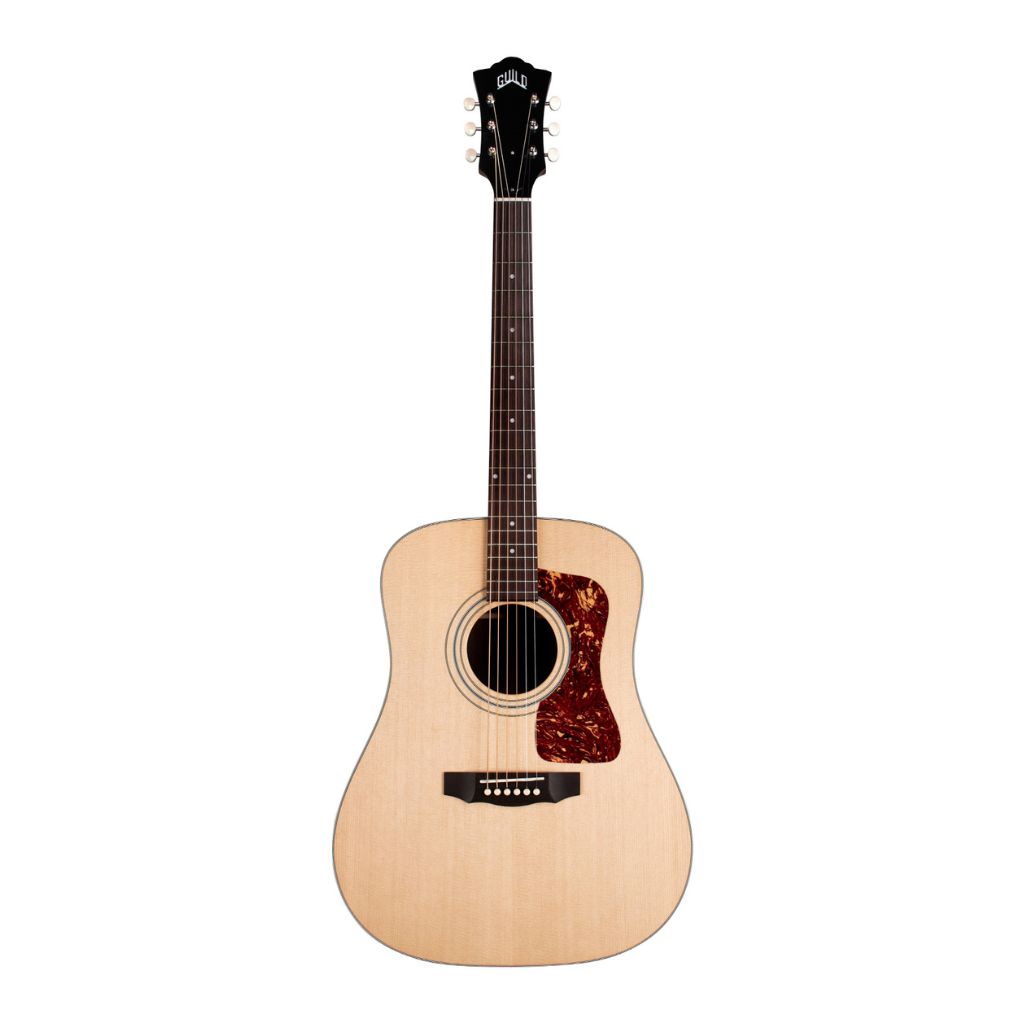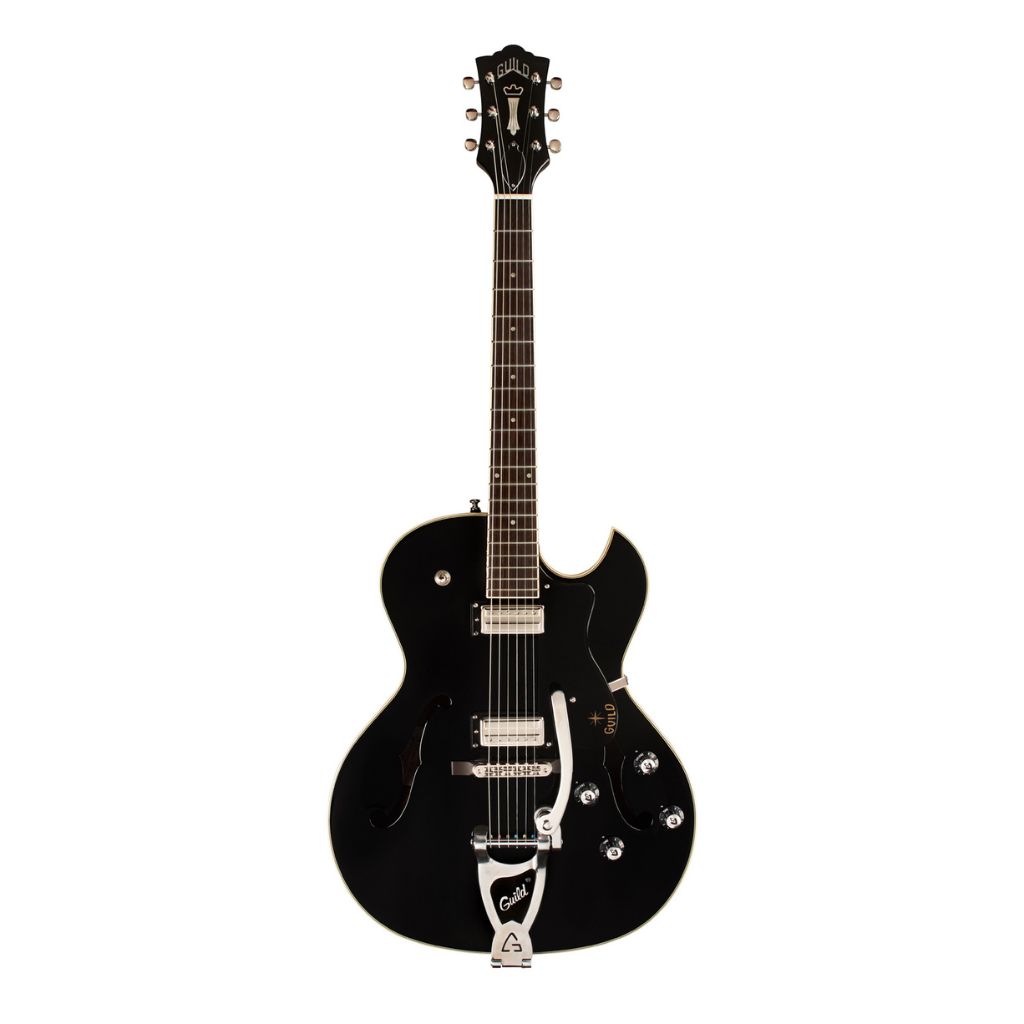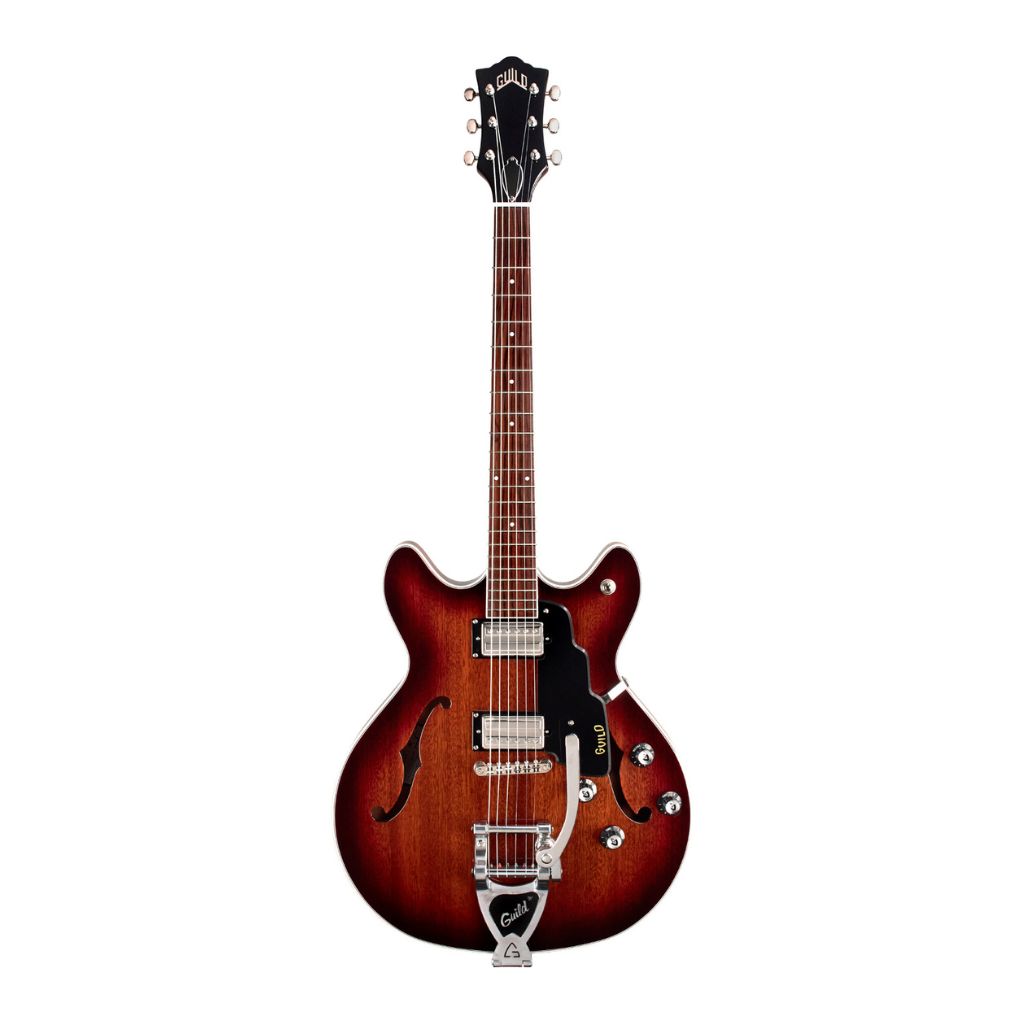Related Tags
A Brief History of Guild Guitars
Guild is one of the most storied names in guitar, but the brand has had a unique journey over the last 70 years.
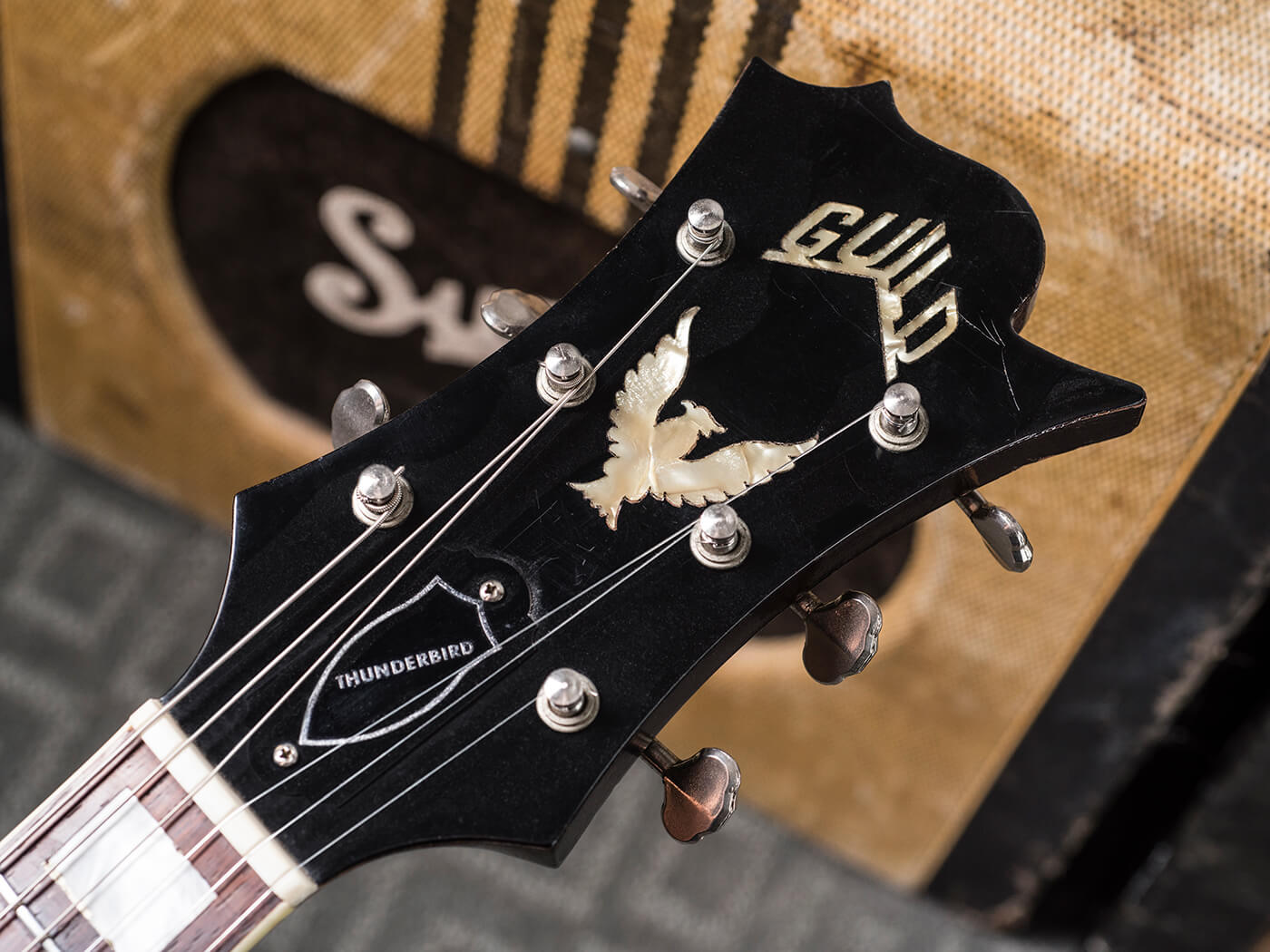
Image: Eleanor Jane
Featured in this article
Guild Guitars is celebrating its 70th anniversary this year, but the brand’s story actually begins seven years earlier in New York City at the end of the Second World War. It was in 1945 that a man by the name of Alfred Dronge opened a music store called Sagman & Dronge with his partner Barney Sagman. A couple years later, Alfred bought Sagman and changed the business name to Alfred Dronge Music.
- READ MORE: A Brief History of Squier Guitars
As was the way of things even back then, Dronge’s music store sold both new and used musical instruments, and also conducted in-house repairs. In fact, many of the used instruments for sale in the showroom had actually come into the business through the repair shop – an important factor in Dronge’s ability to weather the material shortages most instrument manufacturers experienced during and directly following the US involvement in World War Two. He also began importing accordions from Italy and made a nice profit selling those in addition to other instruments.
Then, in 1952 Dronge partnered with a former high-up at Epiphone named George Mannon on a new venture – the Guild Guitar Company. The first Guild Guitars were full-depth hollowbody electric guitars, primarily because of Dronge’s love for jazz music – the advent of the solid body electric guitar had shifted the focus of companies like Fender and Gibson away from the hollowbody market, and Dronge saw a niche.
The workforce at Guild in those days was comprised primarily of those who had previously worked at Epiphone. Back in 1953, Epiphone had shifted production from New York to Philadelphia – either for reasons of downsizing or because the company was in conflict with its unionized workers, most of whom stayed behind while their jobs moved to Philly.

That left plenty of experienced guitar makers looking for work, and many of them soon found alternative employment at the newly formed Guild Guitar Company. Sadly for those workers, the situation wasn’t as rosy as it may have first seemed, and in 1956 Guild moved production to Hoboken, New Jersey – again allegedly to avoid clashing with unions in New York.
At the time of the move, Guild was producing between 100 and 120 guitars a month with its 15 employees. While moving to New Jersey meant they lost some experienced former Epiphone builders, Guild stacked its staff with people who ultimately be responsible for the tremendous growth of the company during the 1960s. Those new hires included Bob Bromberg (general/plant manager), Gilbert Diaz (final assembly) who had previously worked at Gretsch, and Carlo Greco (luthier).
During the 1950s, Guild expanded its line into the flat-top and archtop acoustic markets. The brand also started taking on artist endorsements, largely thanks to Dronge’s contacts within the New York jazz scene. Guild’s list of endorsees included Johnny Smith, Don Arnone, Carl Kress, and Barry Galbraith, among others.
Guild’s first collaboration with an artist resulted in the Johnny Smith Award model, which was made from 1956-1960. Smith had been voted top guitarist by the Downbeat Readers Poll of 1954 and had serious credibility among jazz musicians. Guild hoped to recreate the success of the Les Paul line that had launched just a few years prior with another hot jazz player. Obviously, it didn’t quite catch on the way Les’s guitar did, but Guild would continue to design signature models for artists like George Barnes, Duane Eddy, and Bert Weedon.
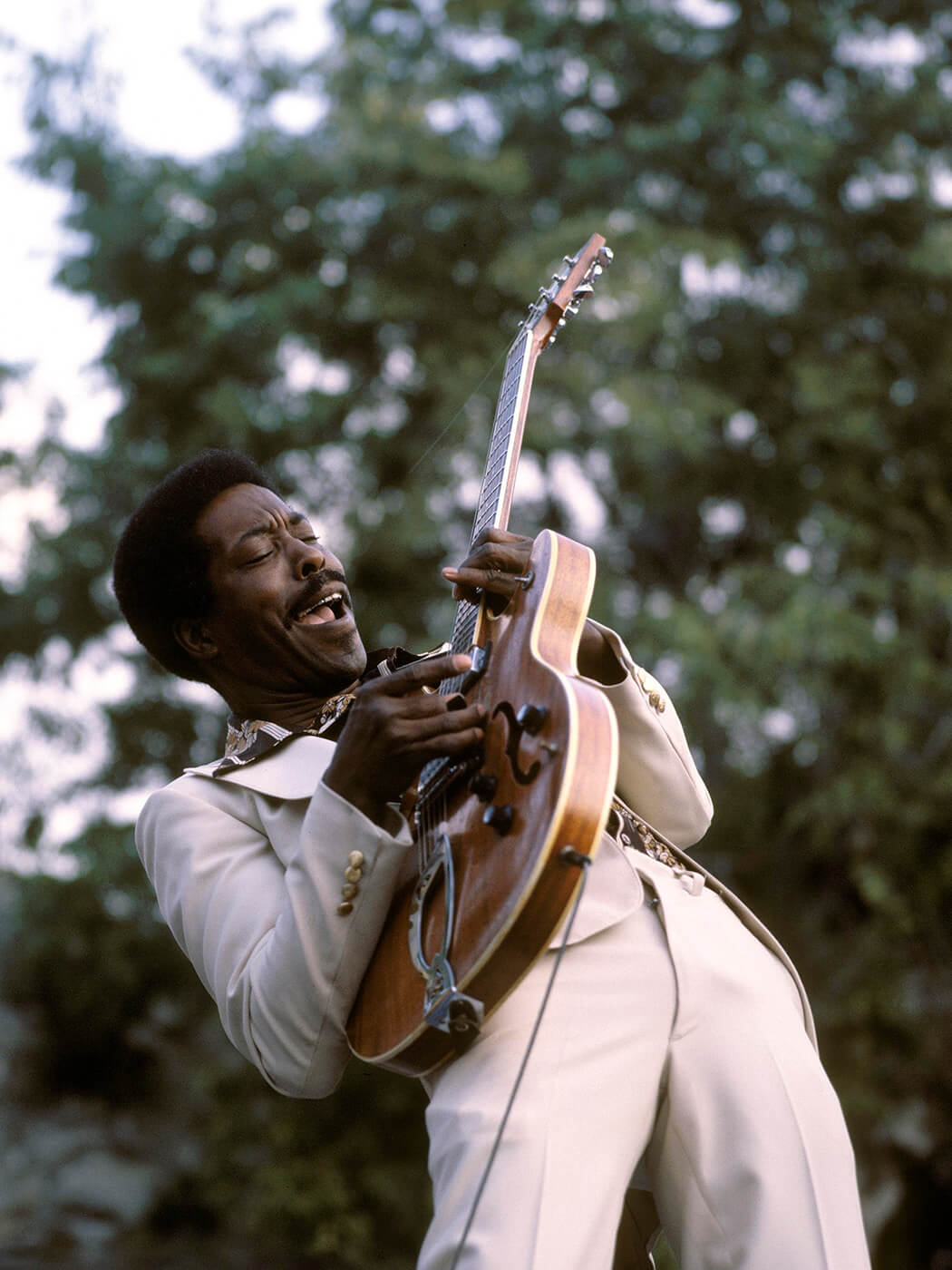
Other artists, while not signature-model endorsees, were putting the Guild lineup of electric guitars to great use. Bluesman Muddy Waters can be seen playing a Thunderbird, and Buddy Guy famously played a Starfire IV model. This era also saw the acoustic lineup branch out into classical guitars under the direction of Carlo Greco, and it’s commonly believed that Randy Rhoads used a Guild classical guitar for the recording of the song Dee on Ozzy Osbourne’s landmark Blizzard of Ozz record several decades later.
As the popular musical tastes began to change in the 1950s and 60s, Guild kept up with trends and began offering solidbody electric guitars, like the S-100 which was produced from 1963 until 1978. The 1960s were a turbulent time for instrument manufacturers in general, it was the dawn of Fender’s CBS Era and Gibson’s Norlin Era, and in 1966, Guild was sold to the Avnet Corporation, albeit with Alfred Dronge still at the helm overseeing production.
That same year, with help from the corporate backers, the company ended up outgrowing its little New Jersey factory and moved production to an old furniture factory on Rhode Island and turned the New Jersey factory into its business office.
But this situation would ultimately end in tragedy for Guild. Rather than drive the 200 miles journey between the factory and the office, Dronge would regularly commute back and forth between New Jersey and Rhode Island by plane. This arrangement worked well until 3 May 1972, when Alfred Dronge’s plane went down in bad weather and the founder of Guild Guitars was killed. The company was taken over by Leon Tell.
The years between 1966 and Dronge’s passing in 1972 were fruitful ones for Guild. It saw many famous artists picking up the instruments – artists like Richie Havens, Jerry Garcia, and Paul Simon all putting Guild acoustics through their paces. Even Jimi Hendrix purchased a left-handed acoustic 12 string [F-212] from Manny’s in New York in 1970. The company would go on to see many other big-name artists using Guild instruments as well – Stevie Ray Vaughn, Slash, Joe Perry, David Byrne, Billie Joe Armstrong, and Kim Thayil would all use them through the 80s and 90s.
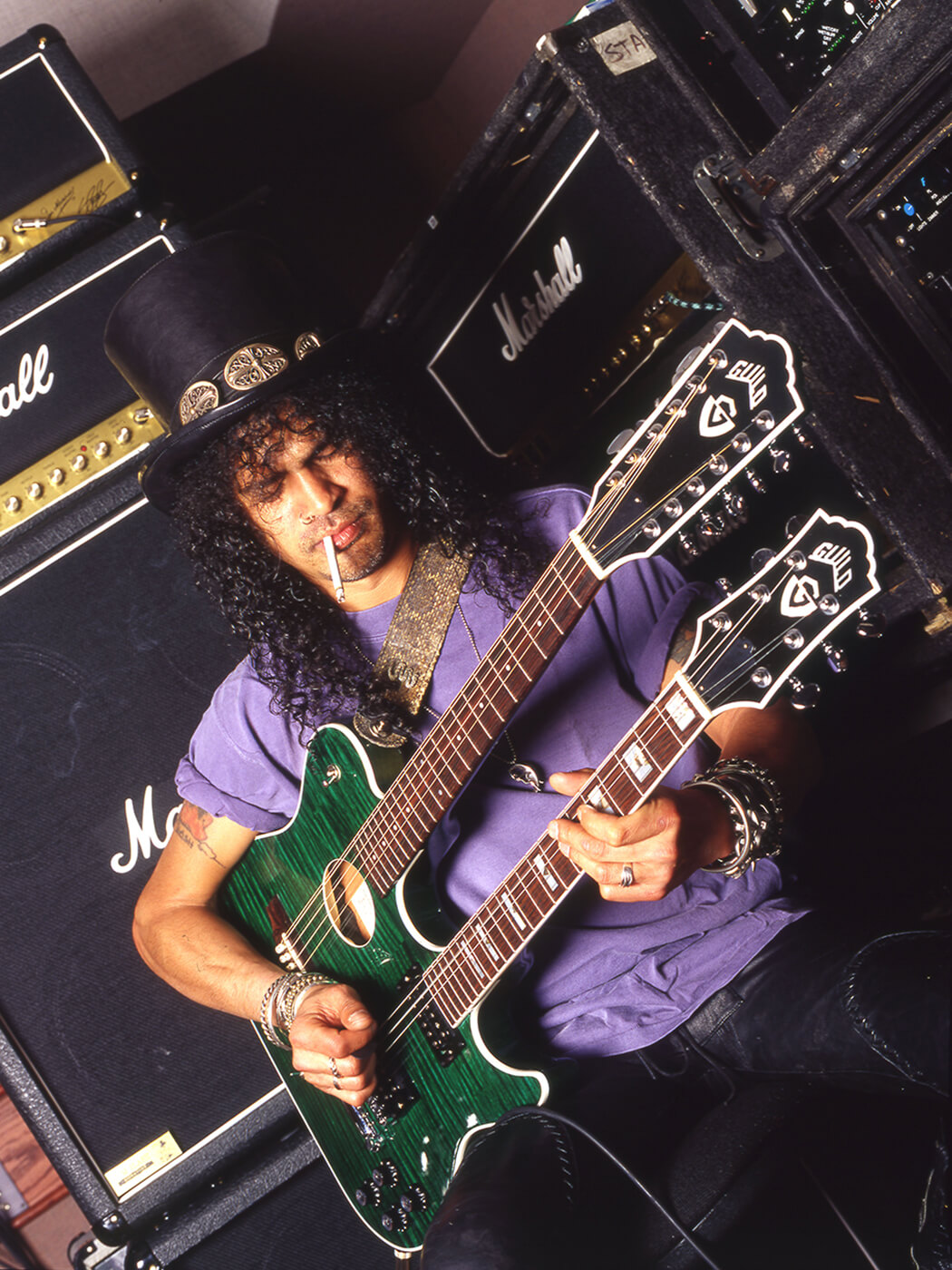
The Guild brand continued steadily until 1995, when it was bought by Fender, the ensuing years were a turbulent time for the brand, but it still managed to churn out quality instruments. In 2001, production was moved from moved from Rhode Island to Fender’s HQ at Corona, CA.
In 2004, production moved again to Tacoma, Washington, and then the company stopped making electric guitars in the US altogether, focusing on their acoustic line. A few years later, production moved once again – this time to New Hartford, Connecticut.
In 2014, Guild was acquired by the Cordoba Music Group from Fender, and production of USA-made Guilds returned to California. Various model lines, including the Westerley Collection acoustics and the all-new Surfliner would be launched over the following years, mainly made in Asia, but the company would also begin making acoustics in its Oxnard facility in 2015.
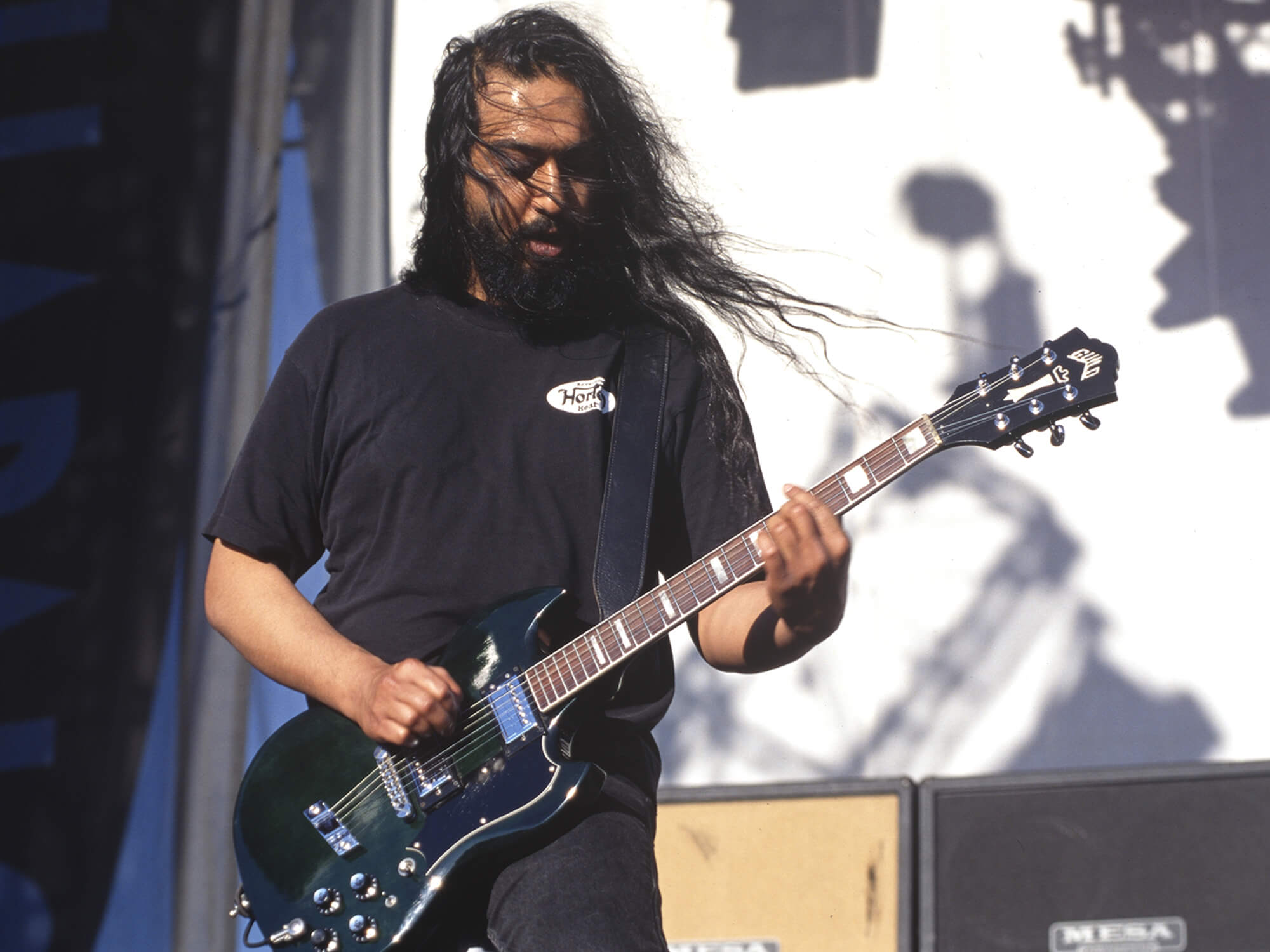
In February of 2023 Guild would get another new owner, as the Cordoba Music Group would be purchased by the Yamaha Guitar Group. While it’s still early days for Guild as part of Yamaha already we’re seeing shoots of interesting new products, not least the new Kim Thayil S-100 – a guitar that has been in the works in the background for years but finally came to fruition in 2023. Hopefully it’s the start of many more interesting new instruments from America’s ‘other’ legendary guitar brand.

